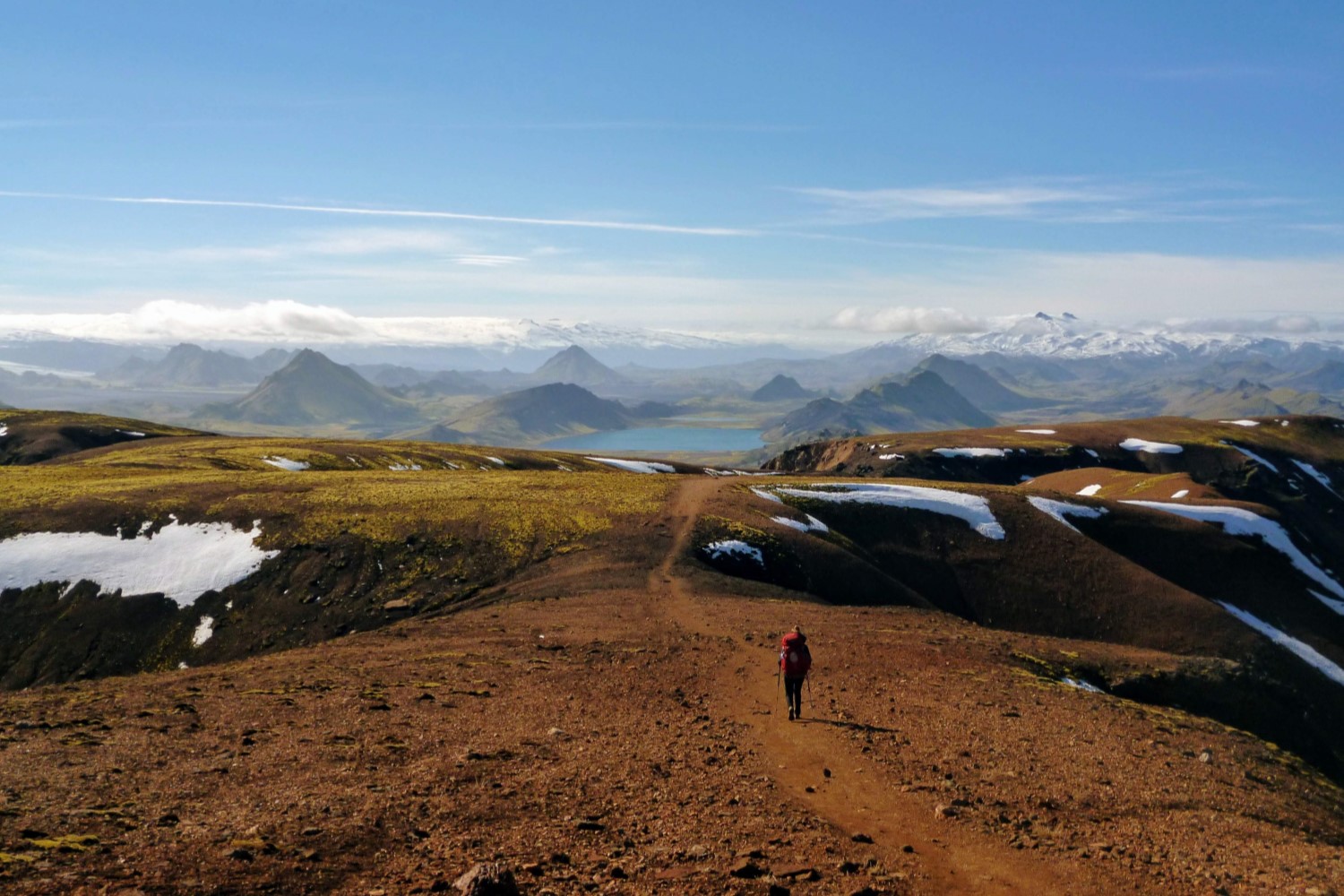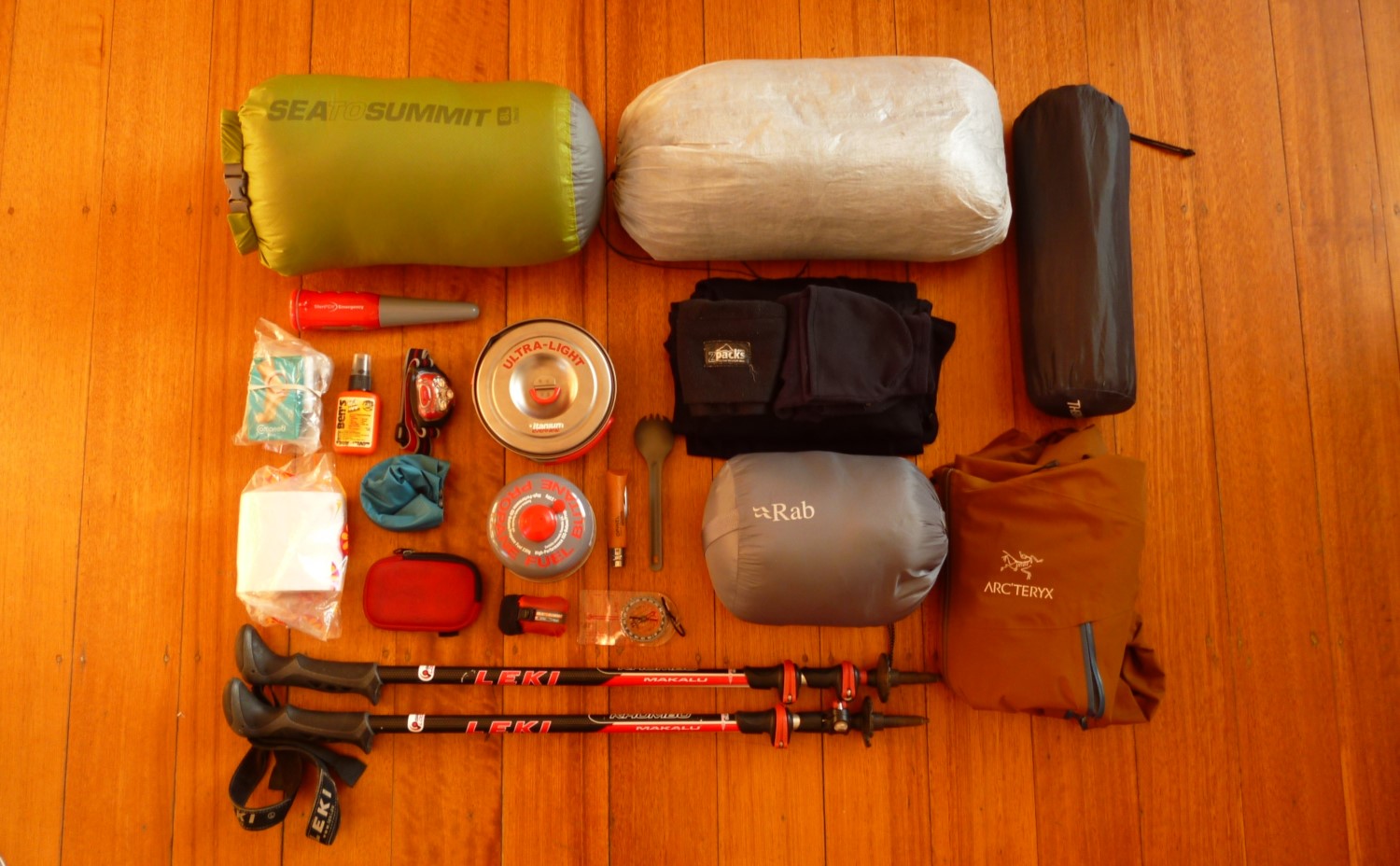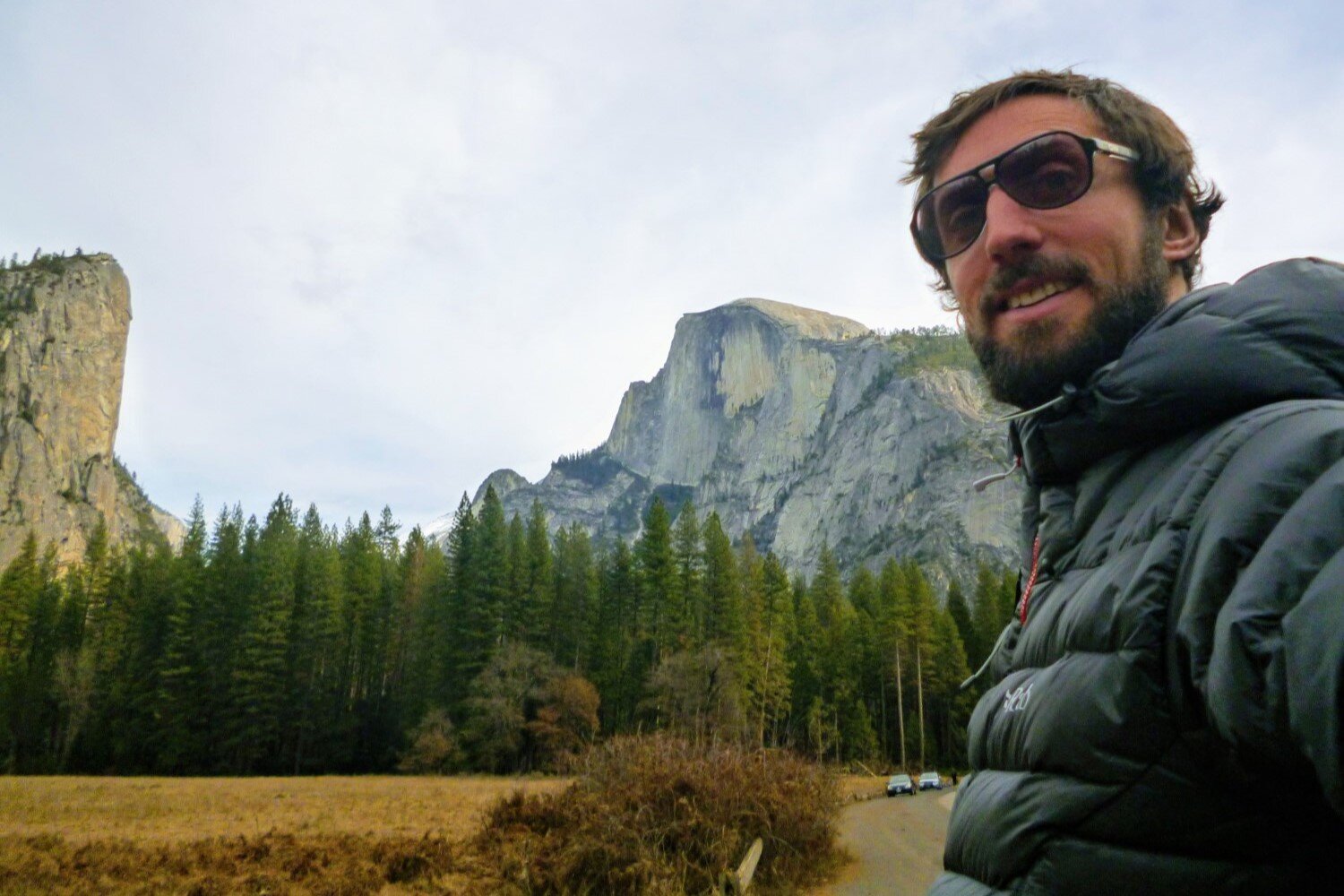Best Climbing Backpacks of 2023
JUMP TO: BLACK DIAMOND ROCK BLITZ 15 / REI CO-OP FLASH 18 / PATAGONIA LINKED 28L / ORTOVOX TRAD 30L DRY / ARC’TERYX ALPHA FL 30 / CILOGEAR 3030 GS WORKSACK / PETZL BUG / BUYING ADVICE
Author: Lana Stefanovic
The Short Version
Best for Trad & Multi-Pitch: Black Diamond Rock Blitz 15
Best on a Budget: REI Co-op Flash 18
Best for Hauling: Patagonia Linked 28L
Best for All Weather: Ortovox Trad 30L Dry
Best for Alpine Climbing: Arc’teryx Alpha FL 30
Best for Customization: CiloGear 3030 Guide Service WorkSack
Honorable Mention: Petzl Bug
The Long Version
Whether you are dangling up a 600-meter rock, cragging with your friends, or tackling some 'cool' offwidth lines, having a good backpack that will not get in the way of your crazy ninja moves is of crucial importance.
Grabbing a quick snack at the belay anchor, taking out your rain jacket when the weather rolls in, or reaching for the headlamp should at all times be fast and easy! And the comfort and accessibility of your backpack can make the difference between sending or whipping your most desired routes.
Luckily, manufacturers are aware of our struggles on the rock and therefore strive to create climbing backpacks that are durable, lightweight, and well organized.
Of course, climbing backpacks tend to vary depending on the type of climbing you are doing: whether it be trad, multi-pitch, mixed routes, snow, or ice. So don’t expect to find one backpack that will do wonders in all styles of climbing. Instead, in this article we look at climbing backpacks that excel at one or more of these climbing styles.
Whether you plan to tackle Red Rock sandstone, climb up El Cap, wiggle yourself through the cracks in Indian Creek, or experience the polished granite of Whitehorse Ledge, you can be sure that one of the backpacks below will be more than worthy of accompanying you on your journey.
If you love reading this review of the best climbing backpacks, then you'll likely love reading some of our other climbing content:
Need To Know What To Look Out For?
With so many different models on the market – bugs, bullets, creeks and flashes – finding the right backpack can be quite challenging. But, never fear! Our buying advice will help you find the right backpack with the right features.
Best for Trad & Multi-Pitch: BLACK DIAMOND ROCK BLITZ 15
VOLUME: 15 L
WEIGHT: 14.2 oz
MATERIAL: 840-denier Nylon
PRICE: $
PROS: Durable, stripped-down profile, fast and easy opening
CONS: Could be a bit lighter
Durable, lightweight, and comfortable! With the Rock Blitz 15, Black Diamond has made a backpack that balances all three components perfectly. If you are a multi-pitch and trad lover, this backpack will only make the excitement rise up.
Its stripped-down profile allows fast movement on the wall, while the foam-padded back panel and shoulder straps ensure comfort and the 840-denier Nylon guarantees durability. Those who want to free climb at their limit can remove the sternum strap and waist belt to get an even lighter pack.
A small external zip pocket on the side will keep your headlamp, phone, topos, and other vital items close at reach for when you need them most. Whilst the main “Blitz style” opening system – i.e. a quick-pull drawcord – will cause no stress at the belay. For the approach and the descent, you can attach your rope using the top closure strap.
Designed to sit high on the back, the Blitz allows clean access to the back of the harness, making you move smoothly like a ballet dancer.
Even if this backpack, at first glance sounds like the ideal one, there are a couple of minor downsides to it. It is not the lightest nor the most durable pack out there. But, if you are looking for a long-lasting comfy pack to get you through those scratchy chimneys and scary slabs, the Rock Blitz 15 is an unbeatable choice!
Best on a Budget: REI CO-OP FLASH 18
VOLUME: 18 L
WEIGHT: 9 oz
MATERIAL: 140-denier Ripstop Nylon
PRICE: $
PROS: Lightweight backpack at a competitive price point
CONS: The least durable pack on this list
If light and fast is what you’re aiming for then look no further – with REI Co-op Flash you will forget you are even carrying a backpack.
And if you are thinking that at 9 ounces this pack will surely be stripped down entirely, you’d (fortunately) be wrong!
It has a quick-pull drawcord that can easily be opened one-handed, and a side zippered pocket that, truth to be told, could be placed a bit closer to the backend. Daisy chains with an ice-axe loop, breathable shoulder straps, and a padded back panel (that can be slipped out and used as a sit pad) will pretty much satisfy all your climbing needs. Plus, for saving even more weight, the Flash 18 features a removable hip belt and sternum strap.
This light weight however does not come without sacrifice. The REI Co-op Flash is the least durable backpack on our list, and its 140-denier Nylon makes it a bad choice for chimney climbing, or hauling in particular. Sharp gear stuffed inside will easily rip through the thin fabric. For the approach, it is therefore best to store the Flash in a bigger backpack and take it out when you get to the rock face.
If you don’t plan to abuse your gear and want something that is minimalistic and lightweight for your “in-a-day“ missions, the REI Co-op Flash 18 is the pack for you. Plus, it comes at a competitive price and is made with bluesign approved fabrics – both an added bonus!
Best for Hauling: PATAGONIA LINKED 28L
VOLUME: 28 L
WEIGHT: 1 lb 10 oz
MATERIAL: 940-denier Nylon, with a PU coating and a DWR finish
PRICE: $$
PROS: Durable, comfortable, and great for hauling
CONS: Bigger and heavier than other recommended follower backpacks
If you are the type of climber that likes moving up the big lines without any weight attached to your back, then you will most likely resort to hauling. To make sure your backpack will survive the notorious journey of being dragged up coarse rock walls, it must be outstanding in terms of durability. That’s where Patagonia Linked 28L steps in!
Its 940-denier Nylon makes it the most durable follower pack on our list. However, in order to achieve that, Patagonia had to make a little sacrifice in terms of weight and size. Of course, during those long pitches on the big wall, you are unlikely to regret having brought a beefy durable backpack like this one.
The tapered shape and drawcord closure system allow for quick access at the belay, and the padded back panel and shoulder straps give greater comfort than many other climbing backpacks. For better organization, you have one exterior pocket and one interior. In that way, your small emergency items will always be close at reach. Plus, top compression straps can be used both for compression and rope carry.
But of course, it is the reinforced haul loops and super durable fabric that are the qualities that catch our attention when talking about the Patagonia Linked. They make the backpack long-lasting and equally usable even after years of climbing. So, if you don’t mind the extra weight and bulkiness, and plan to often haul your pack up the wall, the Patagonia Linked 28L is the ideal choice. Plus you support Patagonia – a company always looking to reduce the social and environmental footprint of their manufacturing and supply chain. Take for example their approach to finding a better DWR treatment for products like this backpack.
Best for All Weather: ORTOVOX TRAD 30L DRY
VOLUME: 30 L
WEIGHT: 26 oz
MATERIAL: Polyamide 360-denier TPU
PRICE: $$$
PROS: Waterproof, no DWR coating
CONS: Not as durable as other alpine backpacks
Ortovox are a company that manufactures high-quality products you will proudly be bringing to the mountains. And their new “Trad” range of climbing backpacks are trustworthy partners when ascending high alpine peaks.
To combat the harsh weather conditions in the mountains, the OrtovoxTrad 30L Dry is built from robust waterproof material that does not use DWR coating and is, therefore, PFC free. All praises to Ortovox for that!
With the waterproof material and a rolltop closure, you can rest assured that everything stuffed in your pack will stay dry and safe. Plus, the seams are waterproof by construction, to help ensure that not even a single drop will invade your holy compartment.
A helmet net and ice axe loops help you carry your mountain equipment with ease. There is also a daisy chain front of centre, and a few more additional loops, that would prove useful when skiing and hiking.
The Trad Dry is not as lightweight nor as durable as other alpine packs, meaning it will probably not be the best choice for your wild, tough climbing missions. its It's “Full Contact Light“ back panel keeps the backpack in close to your body, helping to improve stability and position the weight. Nonetheless, when fully loaded it is not the most comfortable backpack out there.
All in all though, the Ortovox Trad 30L Dry is a solid alpine backpack that is well suited to those mountain missions where the weather is questionable.
For those with shorter backs there is also a different model, the Trad 28L S Dry, that has a shorter back panel.
Best for Alpine Climbing: ARC’TERYX ALPHA FL 30
VOLUME: 30 L
WEIGHT: 22 oz
MATERIAL: 400-denier Ripstop Nylon
PRICE: $$$
PROS: Lightweight, minimalistic, waterproof
CONS: Not as comfortable and adjustable
Fast and light! That is what the FL stands for, and with good reason. The Arc'teryx Alpha FL is made out of a highly weather-resistant material and has a minimalistic streamlined design that doesn't get in the way of your movement up a snowy rock face. It is expandable to 37 liters for the approach, and then shrinks down to 30 liters when needed for the ascent.
When climbing rock, ice, and snow alpine routes the Arc'teryx Alpha FL is a pack you would want by your side. With a waterproof laminated Nylon material and taped seams, the Alpha FL is at all times ready to combat the harsh alpine environment.
It does however have a few downsides. The fit can be quite poor when the pack is loaded, and if you have a smaller or larger back size the Alpha will probably not be ideal for you. The carrying comfort is also not the best out there, due to the thin hip belt that lacks support. The exterior pocket can also get squashed easily when the pack is fully loaded, thereby making your stuff in the exterior pocket hard to reach.
The main opening however, is near perfect, and easy to access with or without gloves. Plus, a top strap means it can be used for carrying rope as well. The Alpha FL also features one additional internal pocket, loops (including haul loops), and webbing for attaching ice tools or other bulky equipment to the outside.
As always with Arc'teryx, the Alpha FL doesn't come with a cheap price tag. Nevertheless, if you need a weather-resistant, light, and durable alpine pack, then the Arc'teryx Alpha FL is well suited to step in and do the job right every time.
Best for Customization: CILOGEAR 3030 GUIDE SERVICE WORKSACK
VOLUME: 35 L
WEIGHT: 2.8 lbs / 1.6 lbs (stripped)
MATERIAL: 210-1000 D Cordura (W/NWD)
PRICE: $$$
PROS: Extremely durable and customizable
CONS: A bit heavy when not stripped down
The CiloGear 3030 Guide Service Worksack is a true go-to alpine pack! A small Portland-based company – CiloGear – has managed to make a backpack that can pretty much do everything.
The expandable / compressible volume range on this pack allows it to go from 35L when normal, to 45L when expanded, and 20L when compressed. That makes the 3030 GS perhaps the most versatile alpine pack —being great both for your in-a-day accents and week-long missions.
Made with an eye for detail, the 3030 GS allows for a significant amount of customization once you get a hang of the strap system. It might take a couple of weeks to figure out the exact configuration that best suits your needs, but that shouldn’t come as a surprise considering all the features and adjustment options.
A set of 10 removable straps, padded shoulder straps and hip belt (with the cozy EvaZote foam), and an internal compression strap make the 3030 GS one of the most comfortable alpine backpacks on the market. The lid, hip belt, sternum strap, and back panel/bivy pad can all be removed as well.
It is built from tough durable fabrics and has reinforcement on the bottom to help increase its lifespan. Waterproof material is something you will have to sacrifice if you decide to buy the 3030 GS, but that might not be a dealbreaker depending on your requirements.
There are three sizes depending on the torso length, and to make your backpack unique and noticeable on the mountains there are plenty of fabric colors for you to choose from. It is worth noting that the backpack doesn't come with a framesheet (an internal panel used to help the backpack hold its shape, as well as protect you from the items in the pack), but they can be purchased separately when ordering.
If you want to have one backpack that works great for all of your alpine activities, the CiloGear 3030 GS Worksack is definitely a winner.
Honorable Mention: PETZL BUG
VOLUME: 18 L
WEIGHT: 18 oz
MATERIAL: Nylon
PRICE: $$
PROS: Sits high on the back, good for everyday use, comfortable
CONS: Not as durable or lightweight as other follower backpacks
The Petzl Bug is a comfy day pack, worth having among your climbing equipment. It is good for short approaches and descents and has all the features needed for rock climbing.
The rectangular shape and padded back panel provide great comfort. You can be sure that a set of nuts will not poke you in the back - which often happens when carrying a follower pack!
It has a great rope carrying system, one compression strap on the top joined with two compression buckles on the side. The exterior zipper pocket is not that useful when the backpack is fully loaded, but the Bug does offer a wallet pocket and a topo pocket in the back.
For better customization, you have an adjustable sternum strap, and a waist belt that can be stashed away. The bottom and sides are reinforced, but the Bug still lacks durability and is a bit on the heavier side. For some, the main zipper opening can be a breeze to open and close, but a drawcord is still a better option when you need fast and easy access at the belay.
The padded back panel and low profile shape make the Bug a great choice when looking for a comfortable backpack for your single-day multipitch routes.
BUYING ADVICE FOR CLIMBING BACKPACKS
Types of climbing backpacks
It is unlikely that you are going to use the same backpack for your quick free climbing accents where you want to strip down the pack to a day’s worth of supplies, and for ascending high alpine peaks.
Therefore, depending on the style of climbing, duration, and location, we have divided climbing backpacks into three categories: crag packs, multi-pitch (follower) packs, and alpine packs.
CRAG PACKS: When going for a full-day climbing session at the local crag, you will need a climbing backpack that can carry all your gear (and hopefully a few refreshing beers) to and from the cliff. Crag packs usually have a volume of 35-50 liters and are designed to be comfortable, durable, and well-organized. You have haul-bag-style packs which are great when wanting to quickly stuff your gear inside, and ones with a duffel-style opening for easier access. To get detailed info on the best crag packs on the market, be sure to check our article on the best crag packs.
MULTI-PITCH (FOLLOWER) PACKS: These backpacks are meant to be worn during exhausting multi-pitch / trad climbs. They fall in the 15-30 liter range and are meant to carry your snacks, water, extra layers, and any other necessities required on the wall. Low weight, durability, and accessibility are the features to look for when buying a follower pack. By the way... don’t let the term “follower” fool you! As a lead climber you will find yourself carrying a small pack quite often as well.
ALPINE PACKS: Alpine packs are like mutants – obtained by mixing the two previous ‘species’. Bigger than follower packs, but without the bulkiness of a crag pack, alpine backpacks are designed to be your closest companion when conquering challenging technical terrain. Durability, low weight and accessibility stand above comfort, so sadly our alpine pack will not be as soft and puffy as our hiking one. They range from 25-50 liters and are used for both the approach and climbing. Be sure your pack has straps for securing bulky gear like ice axes and crampons to the outside.
Capacity
Capacity is the most noticeable difference when evaluating different climbing backpacks. You should choose your backpack according to how much gear you plan to carry with you on the rock.
As mentioned above multipitch packs are in the 15-30 liter range which is enough for a day trip plus an overnight stay, whilst alpine packs with their 25-50 liters capacity can get you through a short day mission (25L) or a week-long accent (50L).
DON'T GO TOO LARGE! Our advice is to always go for the smallest capacity you can. In that way, you can save weight and get a fully stuffed backpack with an evenly distributed load. Floppy big backpacks will bring you no joy!
Weight
Weight is one of the most important features of climbing gear in general – and backpacks are no exception. You don't want to worry about your backpack constantly dragging you down while climbing a 900-meter wall!
Unfortunately however, there is often a tradeoff between weight and any of comfort, features, or durability. High levels of comfort, organization, and durability are generally found on heavier packs, and the ones marketedd as lightweight tend to shave off those comfy suspension systems or use less enduring fabrics.
In the end, it is a matter of your personal preference - are you willing to bear the additional weight for that extra comfort, or are you the type of climber that finds minimizing your gear weight the first priority?
Fabrics and durability
Will your backpack survive those nasty branches on the approach and sharp granite edges that are just waiting to tear it apart? Well, the stronger the material, the greater the chance of it prevailing!
NYLON: Nylon has proven to be the best for tough terrain, due to its high levels of abrasion resistance. However, the ability of nylon to weather abuse can vary depending on the exact specifications of the fabric. Fortunately, we can use denier measurements to get an indication of the durability of nylon.
DENIER MEASUREMENTS: Technically, denier is a measurement of the thickness of the strands or fibers used in constructing the fabric. As the denier rating goes up so does the thickness of the fibers and, therefore, generally also the durability of the fabric.
Therefore, you can be sure that a backpack with 840-denier nylon would be great for hauling up the wall, but on the other hand, a 140-denier nylon pack is going to be less suitable since it would deterioate much faster.
OTHER FACTORS: Of course, denier isn't the only thing that determines the durability of a backpack. Other factors such as the quality of the seam stitching, the type of weave used, or the tightness of the weave in the fibers can all affect the durability of your pack. But nonetheless, looking at the denier of the fabrics will give you the best indication of the durability of a pack.
Comfort
POSITIONING: In addition to having a bunch of gear clipped to the back of your harness, and a chalk bag dangling behind, the last thing you need is a backpack that makes all that equipment even harder to reach.
Climbing backpacks are therefore made to sit high on the back. One mistake you do not want to make is to get a pack that is too high, ‘cause it will likely be trying to take off your helmet every time you look up.
The wisest decision would be to try out the backpack before purchasing or to be sure you can replace it when buying online.
PADDING: Many multipitch and alpine backpacks do not have padding on the hip belt and back panel which makes them less comfortable than crag packs. Some in order to shave weight sacrifice the hip belt entirely. To make your backpack as comfortable and efficient as possible, look for one with a removable hip belt, and adjustable straps that are decently padded on the shoulders.
Features
POCKETS: Alpine and follower packs usually have only one zippered pocket, external or internal. When you are climbing with a backpack on, a small pocket for stashing your headlamp, phone, map, and quick snacks can save you the hassle of helplessly digging through your 30L black hole.
External pockets on the body are slightly less popular ‘cause they tend to get squished when the backpack is fully loaded. I personally favor external pockets separated from the main compartment and placed on the side of the pack.
Crag packs, on the other hand, put their focus on organization and therefore have pockets placed both inside and out, internal loops, and other neat additions for stacking equipment.
EXTERIOR GEAR ATTACHMENTS: The less equipment you have clipped outside of the pack the better. Imagine climbing a chimney with a backpack decorated like a Christmas tree. I’m sure that won’t be fun.
Still, your pack should have a few daisy chains and rope straps, and – if your plan is to climb snow, ice, or mixed routes – you'll also need ice axe and crampon attachments.
Additional considerations
CLOSURE SYSTEM: The closure system for the main compartment can be a determining factor when buying a new climbing backpack. Being able to quickly reach your climbing gear, snacks, and layers is crucial when climbing at your limits. Generally, there are two main closure systems: zippers and drawstrings.
U-shape zip closure is a good option for crag packs, but when going on a multipitch climb a removable lid with a drawstring underneath is unbeatable. Although zippers are in some ways quicker, a drawstring allows for a much wider opening and gives more flexibility on capacity.
STREAMLINING: Streamlining means your pack has the ability to cut off unnecessary bulk and weight. A backpack with removable lid, straps, hip belt is suitable for both the approach (when fully equipped) and the climb (when stripped down).
HAULING: Even if you don’t plan on hauling your backpack up a climb, you will definitely hang it from the anchor at some point. Climbing packs should have reinforced haul loops, but if that is not the case, for extra safety and security you can use both the haul loop and the shoulder straps while hauling.
MORE INFORMATION
If you loved this gear review article, then you'll likely love reading our other climbing related content:
Or perhaps check out our Gear Reviews page or our hiking Destination Guides.






















